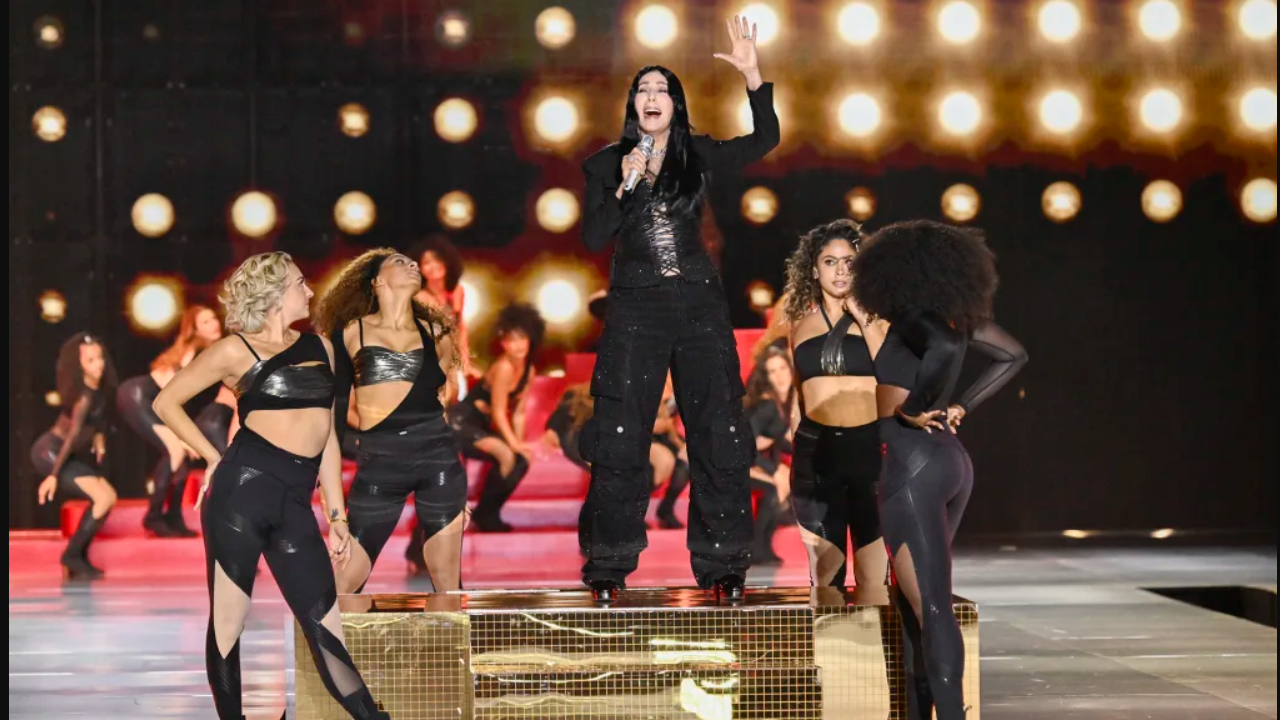
After a six-year break, the Victoria’s Secret Fashion Show returned on Tuesday night in Brooklyn, and it sent a clear message: the brand’s future is being shaped by women. The lingerie giant, once criticized for its lack of inclusivity and outdated ideas of beauty, is attempting to reinvent itself, and this latest show was a major step in that direction.
A Fresh, Female-Driven Focus
One of the most noticeable changes this year was the overwhelming presence of the female gaze throughout the production. The event featured an all-women musical lineup, a diverse cast of models, and more sophisticated lingerie styles. This time around, the brand made room for comfort with pieces like leggings and sheer coverups, showing that sex appeal and comfort can coexist.
The night kicked off with a high-energy performance by Lisa from Blackpink, one of the most popular K-pop groups in the world. As the event unfolded, Gigi Hadid rose dramatically from the stage floor, strutting down a catwalk that could only be described as a cross between a “Barbie” movie set and an ‘80s video game. While Hadid and other models wore the brand’s iconic angel wings, this year’s faux-feather versions were PETA-approved, a nod to the brand’s effort to be more environmentally conscious.
Diversity and Representation Take the Stage
Another key change was the notable increase in diversity. The show featured more Brown and Black models than ever before, many of whom wore natural hairstyles. This shift towards inclusion didn’t stop at skin color—plus-sized and older models also took to the runway, a stark contrast to the brand’s previous reliance on only young, thin models.
Perhaps the most surprising moment was the debut of Kate Moss, one of fashion’s most iconic supermodels, at the age of 50. Moss, who has been a household name for decades, walked alongside her daughter Lila, adding an intergenerational element to the show. The crowd erupted when Adriana Lima, one of the original Victoria’s Secret Angels, made her grand entrance, followed by top models like Bella Hadid and Paloma Elsesser.
Read More : Ryan Gosling Takes on New Sci-Fi Role in Project Hail Mary
Cher Steals the Show
As much as the models dazzled, the real showstopper was the legendary Cher. The music icon delivered a jaw-dropping performance of her hits “Believe” and “Strong Enough”, reminding everyone that she’s still got it. Fashion journalist Roxanne Robinson summed it up perfectly: “The models could have been naked, and no one would have noticed,” because all eyes were on Cher.
A Work in Progress
For years, Victoria’s Secret was synonymous with sexy, dominating American malls and pop culture with its “Miracle” pushup bras and annual fashion shows. The brand, which began streaming its shows in 1999 and hit peak viewership in the early 2000s, was a global sensation. But times have changed.
By the late 2010s, the brand’s over-reliance on a narrow definition of beauty—White, thin, and often airbrushed—began to feel out of touch. Victoria’s Secret faced increasing criticism for sexism, ageism, and a refusal to cater to women of all shapes and sizes. In 2018, a marketing executive at the brand’s then-parent company, L Brands, made inflammatory comments about transgender and plus-size models, sparking a backlash that further damaged the brand’s image. By 2019, viewership of the show had plummeted to just 3.3 million, down from 9.7 million in 2013. In that same period, new, more inclusive competitors like Rihanna’s Savage X Fenty began taking significant market share.
In 2019, Victoria’s Secret canceled the fashion show indefinitely, leaving fans wondering if it would ever return. Over the past few years, the company has tried various rebranding strategies, including a 2021 documentary called “Victoria’s Secret: The Tour,” which spotlighted independent designers from cities like Lagos and London. The brand also replaced its famous “angels” with “ambassadors,” enlisting diverse figures like soccer star Megan Rapinoe and actor Priyanka Chopra Jonas.
A New Era or the Same Old Story?
This week’s event is Victoria’s Secret’s latest effort to bring back some of the glamour and camp of its iconic past while embracing a more modern, inclusive image. The show streamed live on the brand’s social media platforms, a nod to the shift away from traditional TV and towards online audiences. Sarah Sylvester, the brand’s executive vice president of marketing, called it an acknowledgment of Victoria’s Secret’s roots but also a move toward evolution.
“We’re bringing back the parts of our DNA that we love, while also making the brand more modern and inclusive,” Sylvester said. Janie Schaffer, Victoria’s Secret’s chief design and creative officer, echoed these sentiments, noting that the company is listening to its customers who have been asking for the show to return.
However, not everyone is convinced. Critics argue that the brand’s attempts at inclusivity feel inauthentic and may be driven more by the desire to recover sales than a genuine commitment to change. Only time will tell if Victoria’s Secret’s latest rebranding efforts will stick or if the lingerie giant will continue to struggle with its identity in an era where inclusivity is more than just a trend—it’s an expectation.
Conclusion
The Victoria’s Secret Fashion Show is back, and it’s clear that the brand is trying to move forward with a more inclusive message. But with its complicated past, the question remains: will this effort be enough to reclaim its place in the world of fashion, or is this just another attempt to stay relevant in a rapidly changing industry? For now, it’s a work in progress, but one thing’s for sure—all eyes are watching.

2 thoughts on “Victoria’s Secret Fashion Show Makes a Comeback with a New Inclusive Message 🎯”